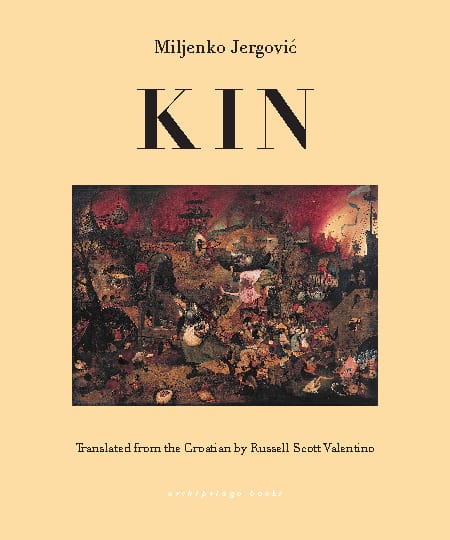Here, from the Calvert Journal, is one of those pre-release teasers about “books to look forward to in X year” (which, in this case is the year 2021). Matt Janney calls it, appropriately, a “time-travelling, place-hopping epic, […] at once a history of family and an ode to Yugoslavia.” This is, well, a teaser.

Of a bit more substance is a starred Kirkus Review published on Feb. 10, which calls Jergović’s book a “vast, generous-spirited story of family across the face of the 20th century in the turbulent Balkans” and a “masterwork of modern European letters.” I can agree with this assessment too, and especially appreciate the notion of its “generosity of spirit.” It’s one of the reasons I have long been attracted to his work.
Both of these gesture towards the rather difficult question of the book’s genre, what it is and how to approach reading it. An epic of sorts, yes, certainly in terms of its vast size and historical scope. A history of a family, yes, especially through the domestic lenses it uses to look at what Mikhail Bakhtin, in another context, calls “great history.” An ode to Yugoslavia perhaps, but also, I would say, to the Habsburg Empire, to pre-1992 Bosnia and Herzegovina, to the Sarajevo of the author’s youth, and to the Dubrovnik of his family’s history there in the early 20th century. A masterwork of European letters, yes, this too, through its embeddedness in European literature and thought, its many references and allusions to historical and contemporary works of architecture, art, literature, music, and to the figures–some real, some imagined–who created all this.
We in the English-reading world often have trouble with this sort of expansiveness (which some might call amorphousness), feeling the need to pin it down as either “fiction” or “non-fiction.” This is a distinction that doesn’t apply consistently enough to be helpful in reading such a book, it seems to me.
There also appears to be a longish excerpt from the beginning of the book available at its Amazon page, and while the formatting is not especially attractive, it’s possible to read a bit there and get a sense of what the prose is like, at least in this part of the book.